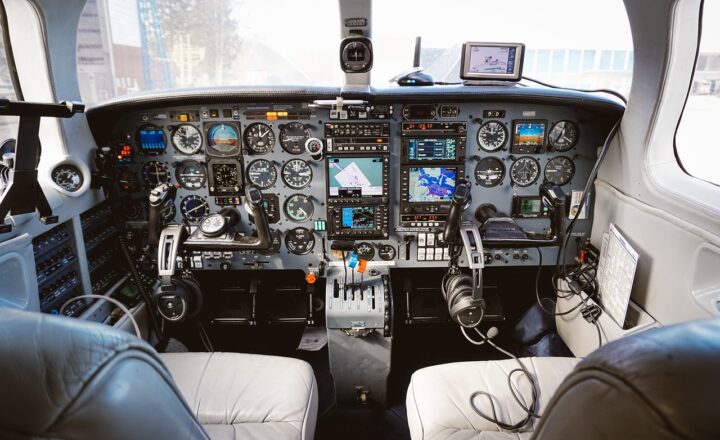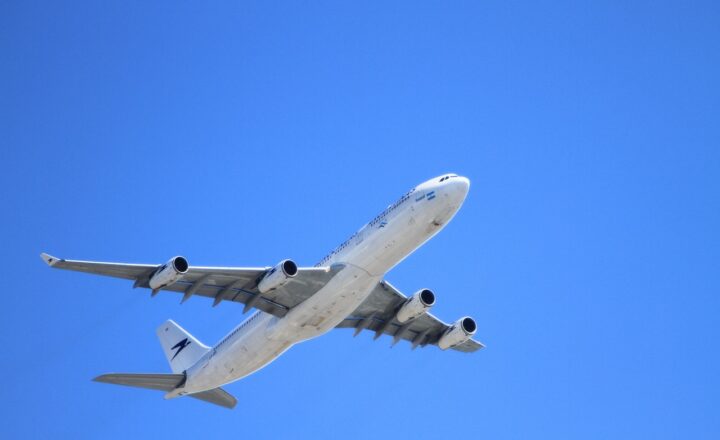The Hidden World of Air Travel: Why Your Flight Is More Complex Than You Think
November 18, 2024

Air travel is often seen as one of the most convenient ways to reach distant destinations, but behind the ease of booking a ticket and checking in lies a labyrinth of intricacies, logistics, and a vast network designed to ensure safety and efficiency. Understanding these complexities can deepen our appreciation for the aviation industry and the significant effort that goes into making each flight operation smooth. Let’s explore this hidden world, uncovering the elements that contribute to the complexity of your air travel experience.
1. The Journey Starts with You: Booking a Flight
The first step of any air travel experience begins with booking a flight. This may seem simple—choose a destination, select dates, and pay for your ticket—but the booking process is supported by a range of systems and technologies. Airlines use sophisticated yield management software to optimize pricing in real-time, based on demand, competition, and other variable factors. This system tries to balance the ticket price to maximize revenue while remaining competitive.
Additionally, online travel agencies (OTAs) play a crucial role in disseminating flight options. They partner with airlines and use algorithms to display flights based on user preferences, making the selection process easier for travelers. Still, the intricacies involved in developing a competitive, user-friendly booking platform highlight the layers of complexity within the air travel domain.
2. The Engineering Marvels: Aircraft Design and Maintenance
Aircraft are wonders of engineering, combining hundreds of thousands of parts and systems to function reliably. Modern commercial jets are designed with amazing precision, resembling flying computers that navigate complex airspace while optimizing fuel efficiency. From the aerodynamic shape of an aircraft to the materials used in construction, every aspect is meticulously engineered.
Furthermore, maintenance is a critical component of air travel. After each flight, ground crews inspect planes to identify any potential issues. Aircraft are subject to rigorous regulatory standards and periodic maintenance checks mandated by aviation authorities. This ensures that every airplane is not only airworthy but also safe for passengers. The entire process, from design to routine checks, underscores how much detailed attention goes into the technical aspects of air travel.
3. The Backbone of Air Travel: Air Traffic Control
One of the most misunderstood aspects of air travel is air traffic control (ATC). Many don’t realize that there are various layers and types of controllers—ground control, tower control, and en-route controllers—each managing flights during specific phases of their journeys. Each air traffic controller is responsible for maintaining safe distances between aircraft, coordinating takeoffs and landings, and ensuring that pilots receive timely instructions.
Additionally, ATC systems utilize advanced radar and satellite technology to track flights in real-time. Knowing the position, altitude, and heading of every aircraft within their jurisdiction is crucial for preventing mid-air collisions. Consequently, the intricate web of air traffic management that facilitates both delays and time-sensitive operations reveals the complexity inherent to modern air travel.
4. Passport Control and Security: Ensuring Safety and Compliance
When flying internationally, one cannot overlook the significance of passport control and security checks. These processes are integral to maintaining safe travel environments by preventing unauthorized individuals from accessing aircraft or airports. The security measures include screening bags, utilizing advanced imaging technology, and conducting thorough passenger checks.
Moreover, immigration protocols vary by country, and understanding them is vital for travelers. Each government sets its own regulations regarding who can enter and exit its borders, which can lead to complex scenarios involving visas and additional documentation. The various layers of security not only reflect the need for safe air travel but also highlight the bureaucratic aspects associated with international flight operations.
5. Global Connectivity: Flight Routes and Schedules
Airlines rely on a complex interconnectivity of flight routes to establish schedules that accommodate passenger needs while maximizing operational efficiency. Flight paths must consider air traffic patterns, weather conditions, geopolitical factors, and the capabilities of specific aircraft. In addition, airlines often collaborate with one another in code-share agreements, which allows passengers to book joining flights across different carriers.
All these elements reflect the dynamic nature of air travel, showing that one seemingly straightforward flight involves matrices of strategic planning. Adjustments can lead to ripple effects throughout an airline’s schedule, requiring further coordination and flexibility from all parties involved.
6. The In-Flight Experience: Onboard Operations and Services
Once aboard the aircraft, the complexity of air travel continues. Cabin crews are trained to handle numerous onboard processes, including safety protocols, meal service, and passenger communication. Their responsibilities go beyond serving food and drinks; they are trained to manage emergencies, ensure passenger comfort, and uphold safety regulations.
Moreover, modern aircraft are equipped with technological innovations that enhance the flying experience. From entertainment systems to Wi-Fi connectivity, airlines continually seek ways to improve passenger satisfaction—a challenging task, especially given the diverse needs of travelers onboard.
Conclusion: A Complex Tapestry of Air Travel
The hidden world of air travel comprises multifaceted layers that work seamlessly to deliver a safe and enjoyable experience. From booking a flight to the intricate systems ensuring onboard safety, the complexity of air travel is astounding. Although most passengers only experience the surface of this vast network, understanding the complexities can foster a deeper appreciation for the aviation industry’s efforts.
Next time you embark on a flight, take a moment to reflect on the vast number of processes designed to make your journey smooth and effortless. The world of air travel may be intricate, but it serves as the invisible thread connecting us to distant destinations—crafting our globe into a more interconnected community as we soar through the skies.






